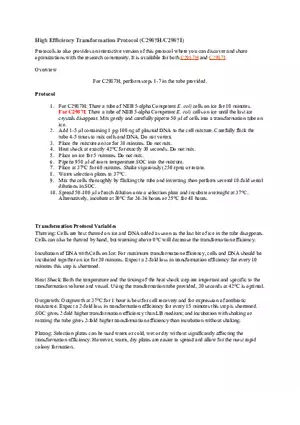Answer Key
Simulating How Gene Expression Works
-
University:
University of Colorado Boulder -
Course:
BCHM 2700 | Foundations of Biochemistry Academic year:
2020
-
Views:
131
Pages:
2
Author:
Dobrenjemb7pq
Related Documents
- MCQ (Connective Tissue)
- 7.05 S20 Solutions to Problem Set 9
- 7.05 S20 Solutions to Problem Set 11
- Amino Acid Biochemistry Cheat Sheet
- Macromolecules are Key to Cellular Structures
- Biochemistry Exam IV
- Biochemistry Exam 4 Answer Key 24 Questions
- BioChem 330 - Course Outline Electron Transport Part 1
- MCQ (Protein, Vitamin and Enzyme)
- MCQ (Minerals, Body Fluids and Cell Membrane)
- Adrenal Learning Material
- Answer Key: MCQ on Vitamins
- MCQ (Enzyme)
- MCQ (Protein Chemistry)
- Amino Acid and Protein Chemistry
- Nutritional and Metabolic Classification
- MCQ (Epithelium)
- MCQ (Protein and Amino Acid)
- Protein Crystallography Part I. Crystal Growth
Simulating How Gene Expression Works
Report
Tell us what’s wrong with it:
Thanks, got it!
We will moderate it soon!
Report
Tell us what’s wrong with it:
Free up your schedule!
Our EduBirdie Experts Are Here for You 24/7! Just fill out a form and let us know how we can assist you.
Take 5 seconds to unlock
Enter your email below and get instant access to your document



